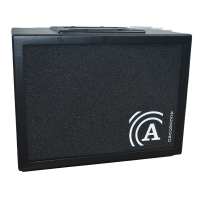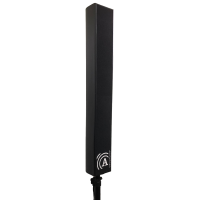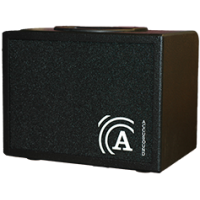Which amplifier?
A good question and perhaps one that you need to answer yourself. The point of an amplifier is to make the sound of your instrument louder. Here I am really referring to combo amplifiers or ones that have built-in loudspeakers. Strictly speaking the electronic part is the amplifier but, in this case, I am going to include the loudspeaker and refer to the whole package as the amplifier.
There are probably two main types of amplifiers, acoustic and “not” acoustic amplifiers. The sort of amplifier you might see being used by a guitarist, particularly an electric guitarist, is intended to add some defined character to the sound. This is where some electric guitarist may want a Marshall amplifier because they like the type of additional sound a Marshall amplifier gives to their music. Others may like the sound of a Carslbo or Fender etc. I’m not going to discuss these amplifiers as the choice is down to taste as much as anything else. I am going to talk about acoustic amplifiers.
So, what makes an acoustic amplifier? The intention is that an acoustic amplifier will reproduce exactly the same sound as is fed into it, but louder. Obviously, some makes achieve this to a greater extent than others and again this is going to be down to your listening tests. Although any instrument can be played through our amplifier, I will mainly reflect on comments made by harp players, both lever and pedal harp players.
Accusound are in the business of producing microphones and pickups for acoustic instrument so all the amplifiers we produce are acoustic amplifiers and from the reports of our customers they do a great job of being acoustic amplifiers. We used to supply another manufacturer’s acoustic amplifier but as they became expensive and variable in price due to exchange rate fluctuations, we decided to design our own. It took 5 years and several design prototypes but finally we produced the AMA-1 acoustic amplifier that has sold in great numbers since its invention. We now have several variations and progressions on this original design, more about those elsewhere.
Although, as described above, an acoustic amplifier should reproduce the input as faithfully as possible, we are only human and as a musician we sometimes want a slightly different sound compared to the raw sound of our acoustic instrument. Actually, we often want to supplement the sound due to short comings in the venue, perhaps a very dry sounding marquee. For this we have added the usual tone controls allowing boost or cut in three broad frequency bands, low or bass, mid and treble to top. This is perhaps obvious as we all know that what we want to hear is not always what we get. On top of this we have added 16 different types of reverberation. And before you tell me that this isn’t keeping the original sound, I know, but as I did mention the issues of playing in a dry, totally dead marquee, the addition of a little reverberation livens things up and makes an instrument, like a harp, sound magnificent again.
The amplifier provides these 16 variations of reverberation or effects within the unit itself. This gives you the opportunity of trying some different things and if you are going to amplify the harp then it may be that you will want to go still further into effects or pedals. To allow the addition of different effects the amplifier has an effects send and an effects return socket. Between these two you can add as many effects pedals as you want. There are hundreds of pedals available, mainly, and originally designed for guitars but all compatible with our amplifier and a great many are interesting to use with acoustic instruments. The use of pedals would require a complete article in its own right, here I will just mention that they are available and particularly interesting to use are reverb pedals and loop pedals which will allow you to accompany yourself whilst playing.




